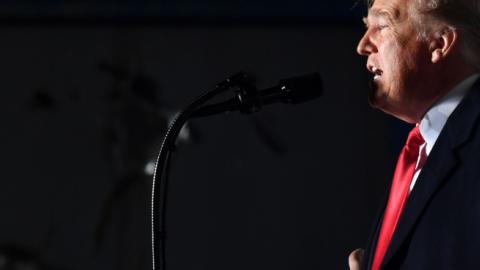By virtually any measure, the American economy is booming. In the second quarter of this year, economic growth eclipsed 4 percent—a number derided as impossible just a few years ago—while consumer confidence recently reached an 18-year high. Moreover, the jobless rate has fallen to 3.7 percent, the lowest since the 1960s, reflecting the millions of jobs that have been created in the past eighteen months. Today, almost two-thirds of American voters view the economy as excellent or good. If James Carville’s adage, “It’s the economy, stupid,” is any guide, Republican incumbents should be coasting to victory in next week’s midterm elections.
And yet, by consensus, the Democratic party is poised to retake the majority in the U.S. House of Representatives. How to explain the discrepancy? For one, Republicans face strong historical headwinds. Since the end of the Civil War, the president’s party has lost seats in 35 of 38 midterm elections. Worse, when the president’s approval ratings have dipped below 50 percent, his party has generally lost two dozen seats or more. The proof is in the pudding: with only a 23-seat majority at present, several Republicans have announced over the past year that they will retire at the end of their terms. Better to go out as powerful committee chairmen, so their thinking, than languish in the minority.
Historically, opposition parties have performed well in midterm elections for the simple reason that they enjoy a clearly discernible target: the president. In the case of Donald Trump, loathed by progressives and liberals alike, this is especially true. The Democrats’ agenda remains a loose amalgamation of ideas, at best—sufficiently vague to allow persuadable voters of varying stripes to project their own ideals onto the party. But over the past two years, by defining themselves in opposition to the president, the Democrats have massively outraised Republicans and built a consistent enthusiasm lead on the generic ballot. The Republican effort to tag Democrats as the party of former Speaker Nancy Pelosi, a deeply unpopular figure across the country, has been only partially successful in reminding conservatives of why they voted for Donald Trump.
The Democrats’ agenda remains a loose amalgamation of ideas, at best—sufficiently vague to allow persuadable voters of varying stripes to project their own ideals onto the party.
In the U.S. Senate, however, the story is different. Across the country, Democratic senators are on the defensive. Of the thirty-five senate seats on the ballot (one-third of the Senate is elected every two years), a whopping twenty-six are held by Democrats. Ten of these Democratic incumbents are running in states won by Donald Trump; only one Republican candidate, Dean Heller of Nevada, represents a state won by Hillary Clinton. This lopsided map is explained by the 2006 and 2012 election cycles; owing to the then-faltering Iraq war and President Obama’s reelection, Democrats were able to make huge inroads in Republican leaning-states those years. Now, they must work to defend these seats.
While Democratic party enthusiasm remains white-hot, the tumultuous hearings to confirm Brett Kavanaugh to the Supreme Court animated the Republican party as well. Aghast at the left’s casual disregard for the presumption of innocence, Republican enthusiasm shot upward almost overnight. If current trends hold, and the Democratic enthusiasm edge is blunted, incumbent Senate Democrats mismatched to Republican states will lose. Under such circumstances, the GOP is likely to expand its Senate majority even while losing the House of Representatives.
If current trends hold, and the Democratic enthusiasm edge is blunted, incumbent Senate Democrats mismatched to Republican states will lose.
Irrespective, American politics is undergoing an epochal shift. “I am a nationalist. Nationalist. Use that word,” President Trump said last week at a rally for Senator Ted Cruz in Houston. This brand of popular nationalism is remaking the Republican party. In one primary after another, in a tremendous winning streak, the president’s preferred Republican candidates have beaten out establishment contenders. Meanwhile, the Democrats have turned hard left, mainstreaming older socialists like Senator Bernie Sanders while elevating newer faces, like Alexandria Ocasio-Cortez. The era of George H. W. Bush’s genteel conservatism and Bill Clinton’s New Democrats is now past.
If, as expected, the Democrats take the House and Republicans hold the Senate, the next two years will settle into a predictable rhythm: House Democrats, outfitted with the powers of the majority, will launch one investigation after another into the president. As major legislation stalls between the two chambers, the president will govern through executive powers—and continue sending conservative judges to the Republican Senate. Limited at home, the president may reinvigorate his foreign policy abroad. But most of all, the midterms will serve as the starting pistol for another contest: the presidential election of 2020. And in that, Donald Trump may find Democratic control of Congress a useful foil as he campaigns for four more years in the White House.
















